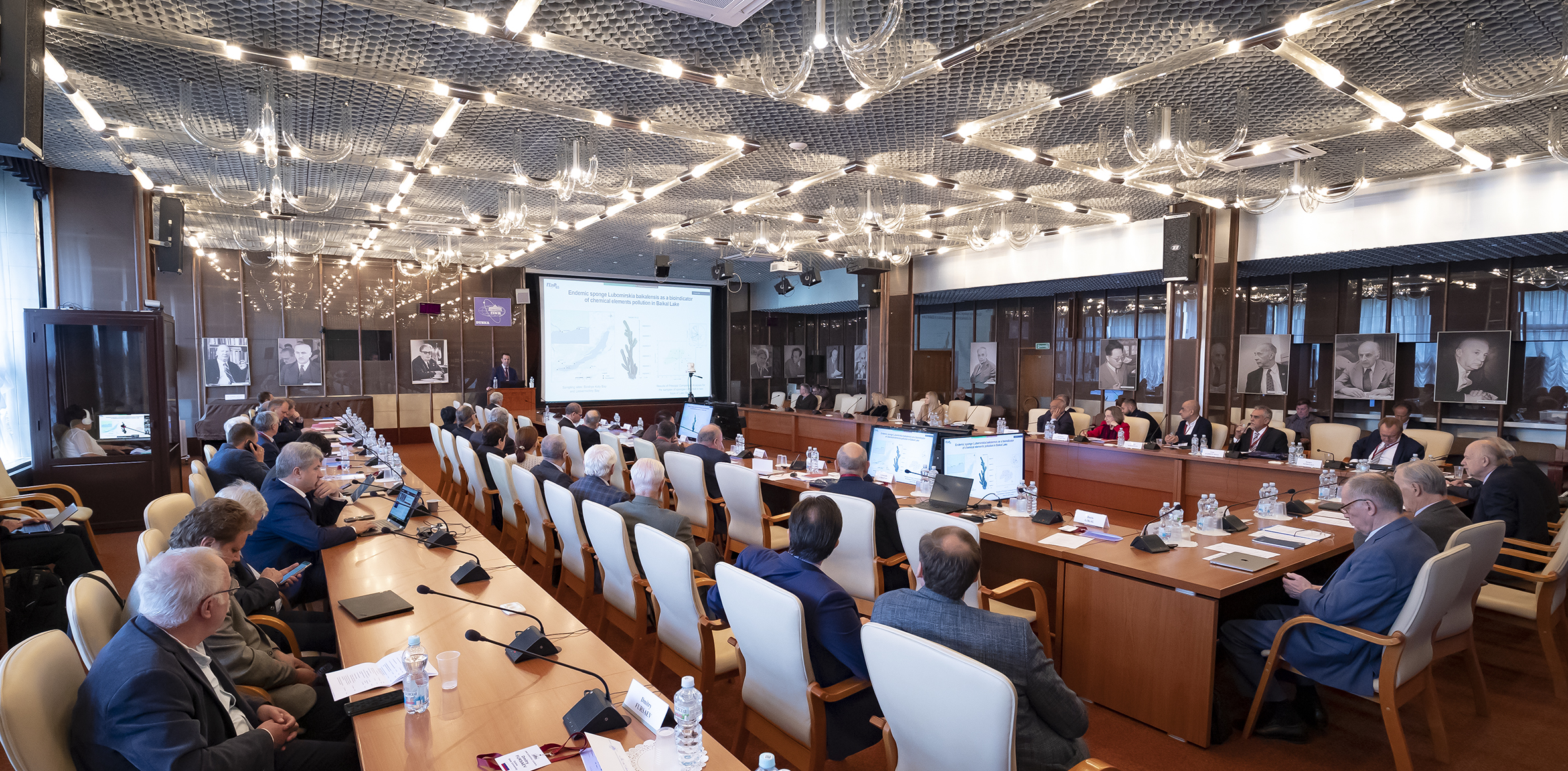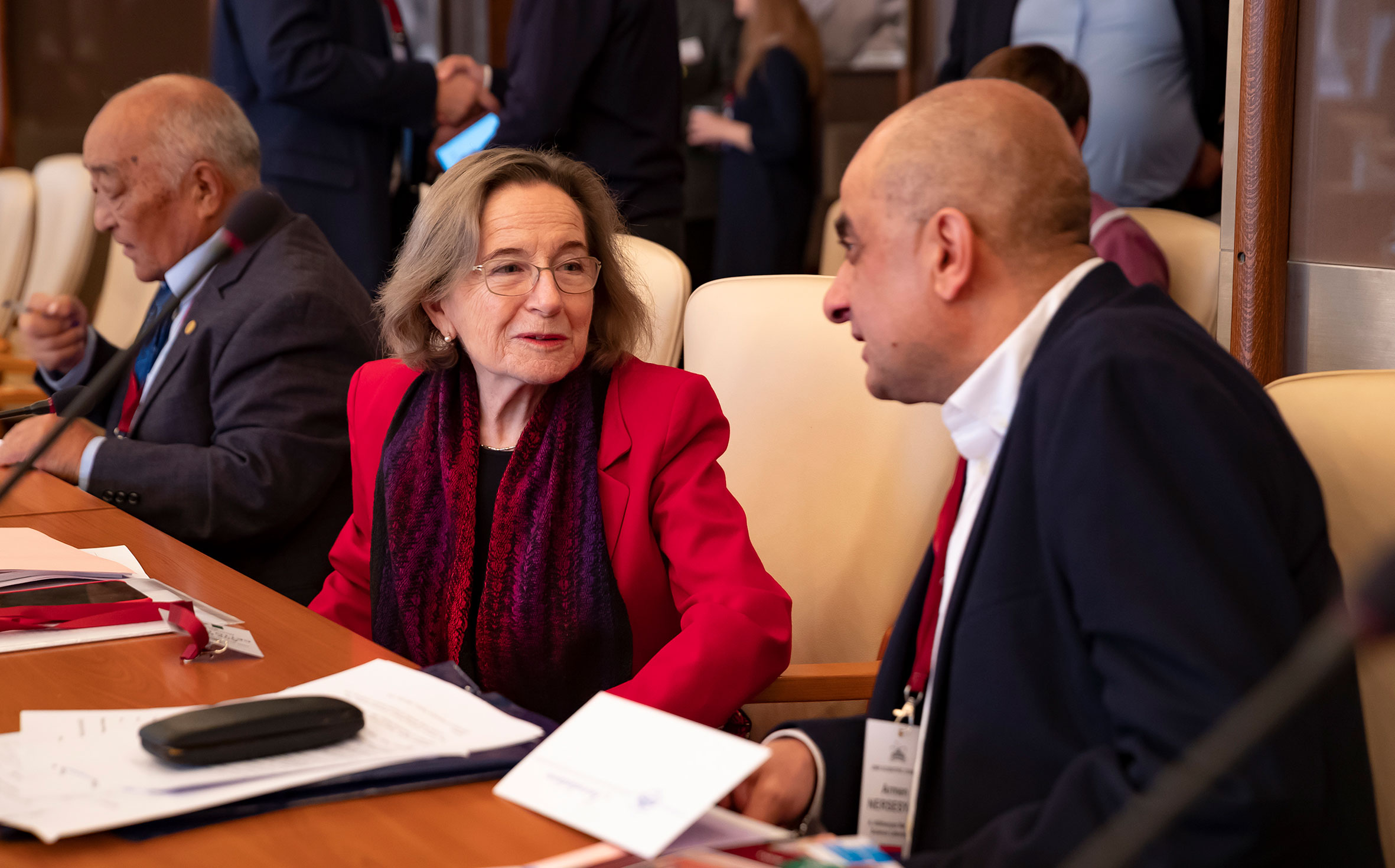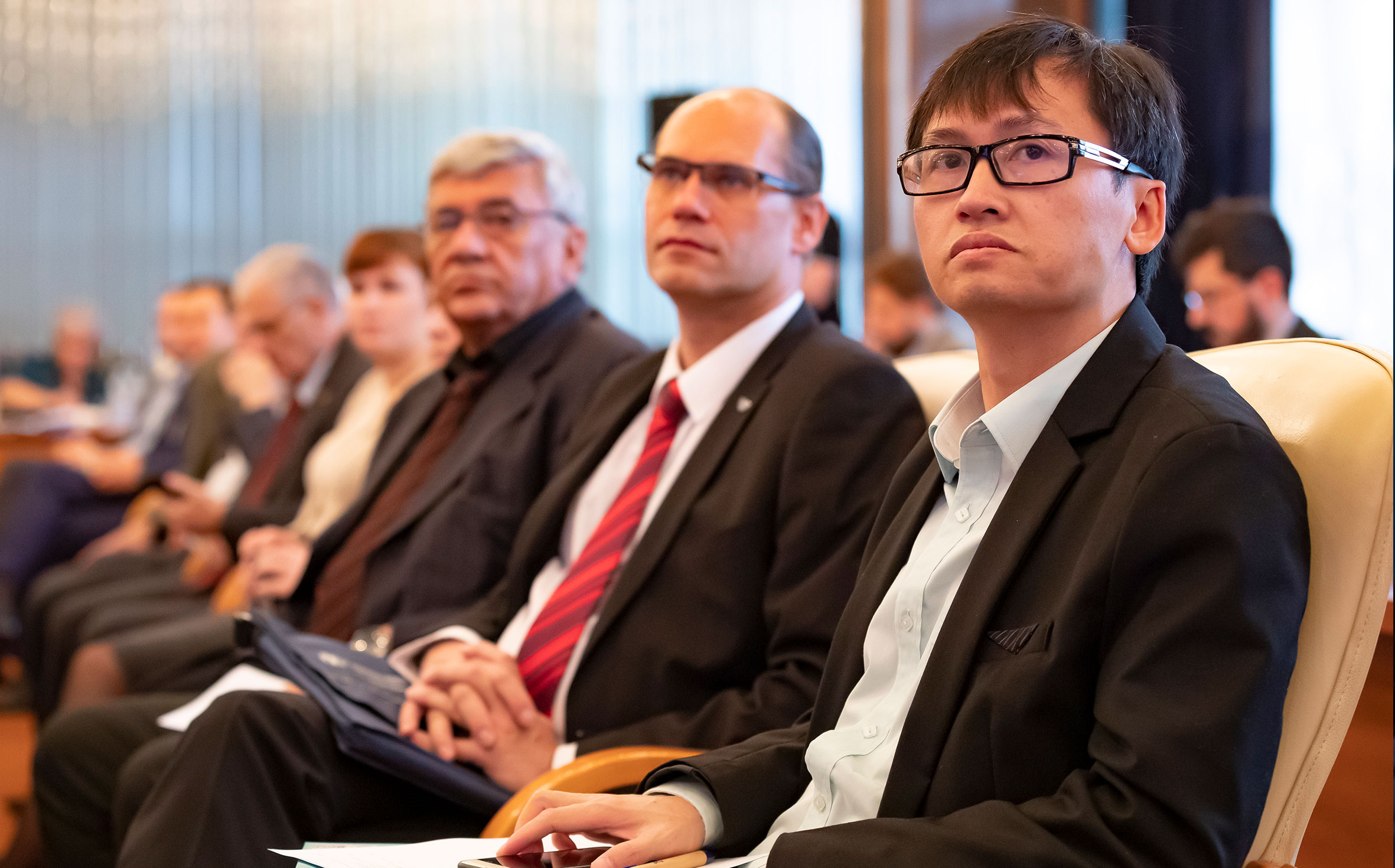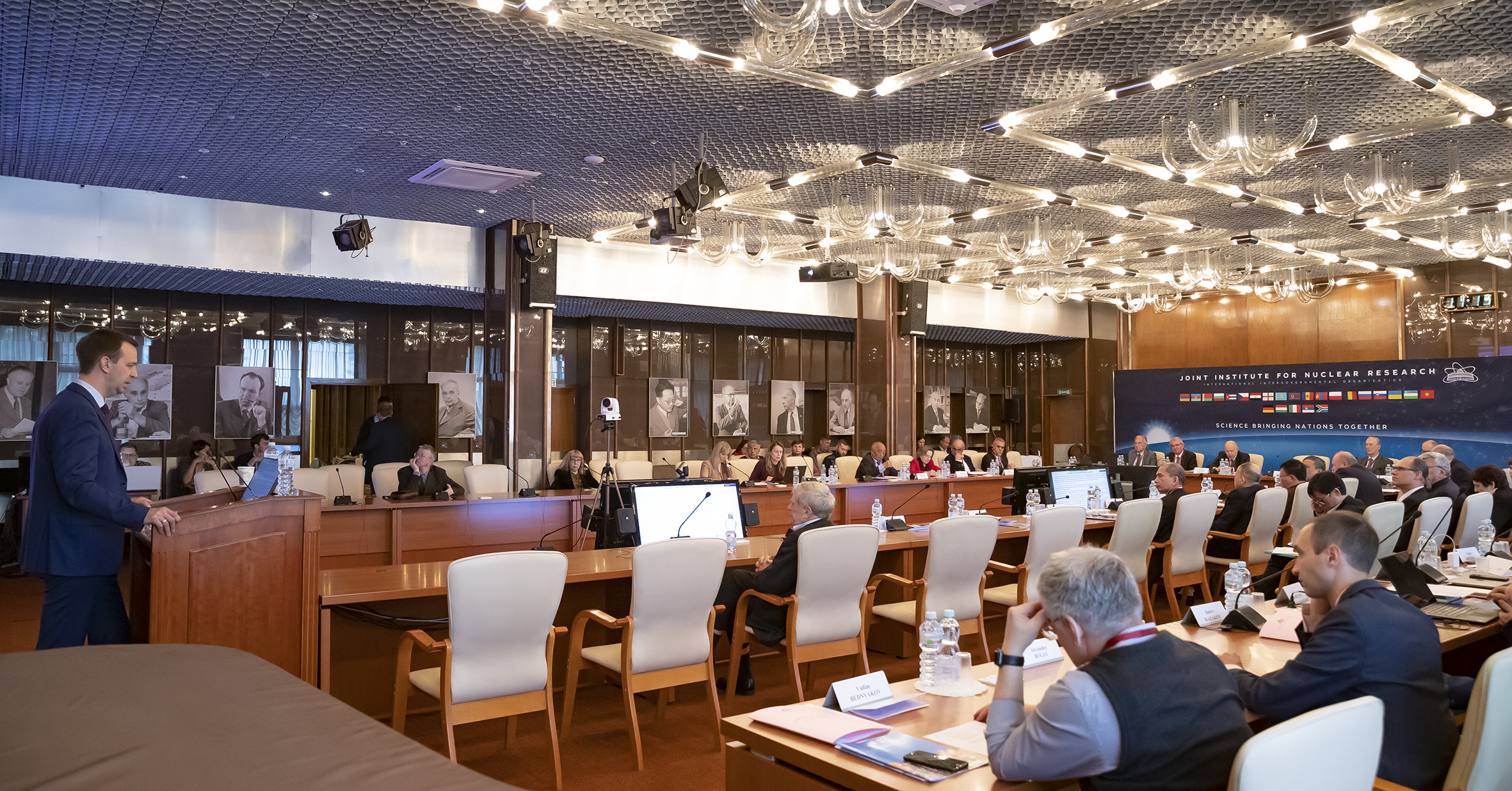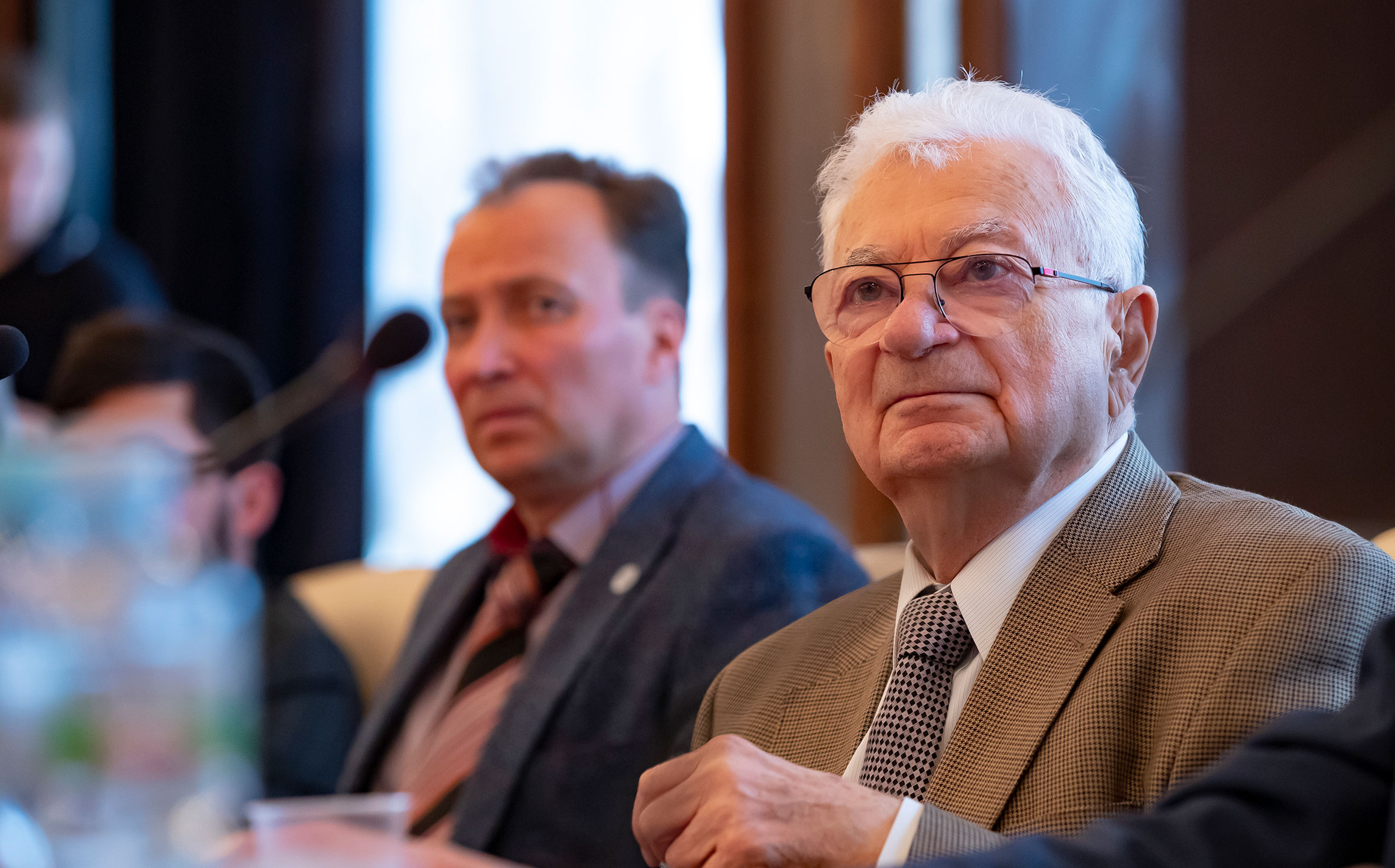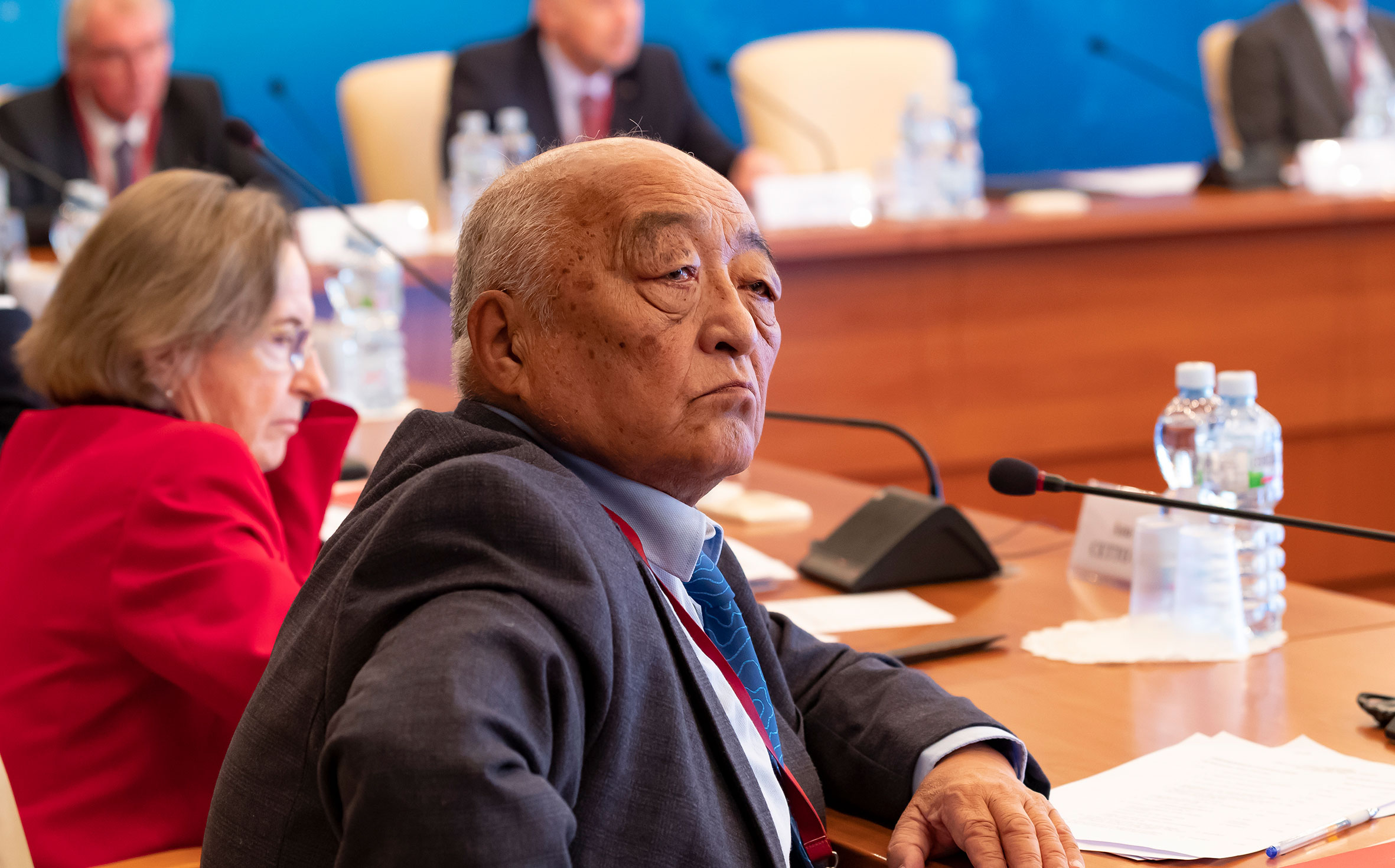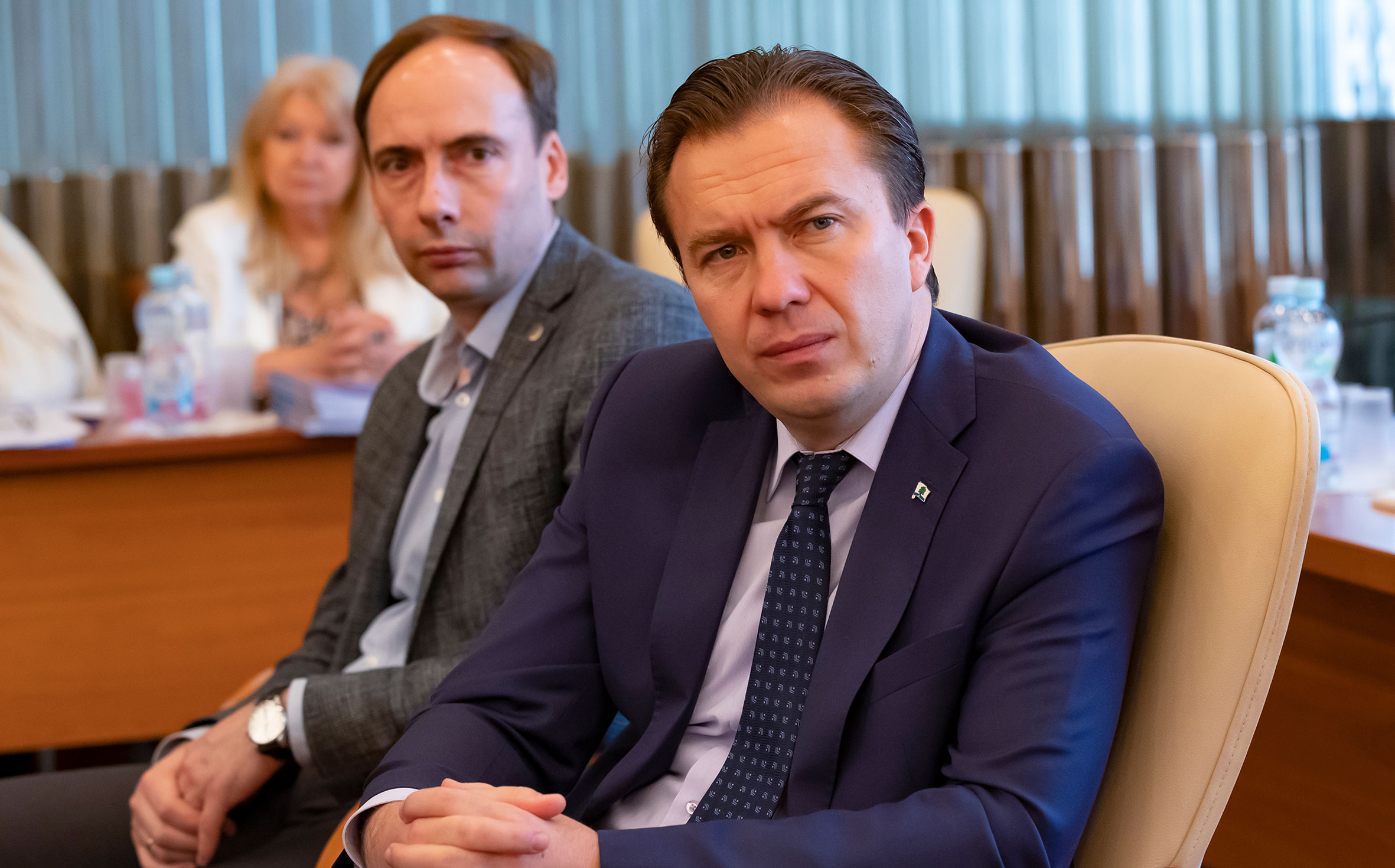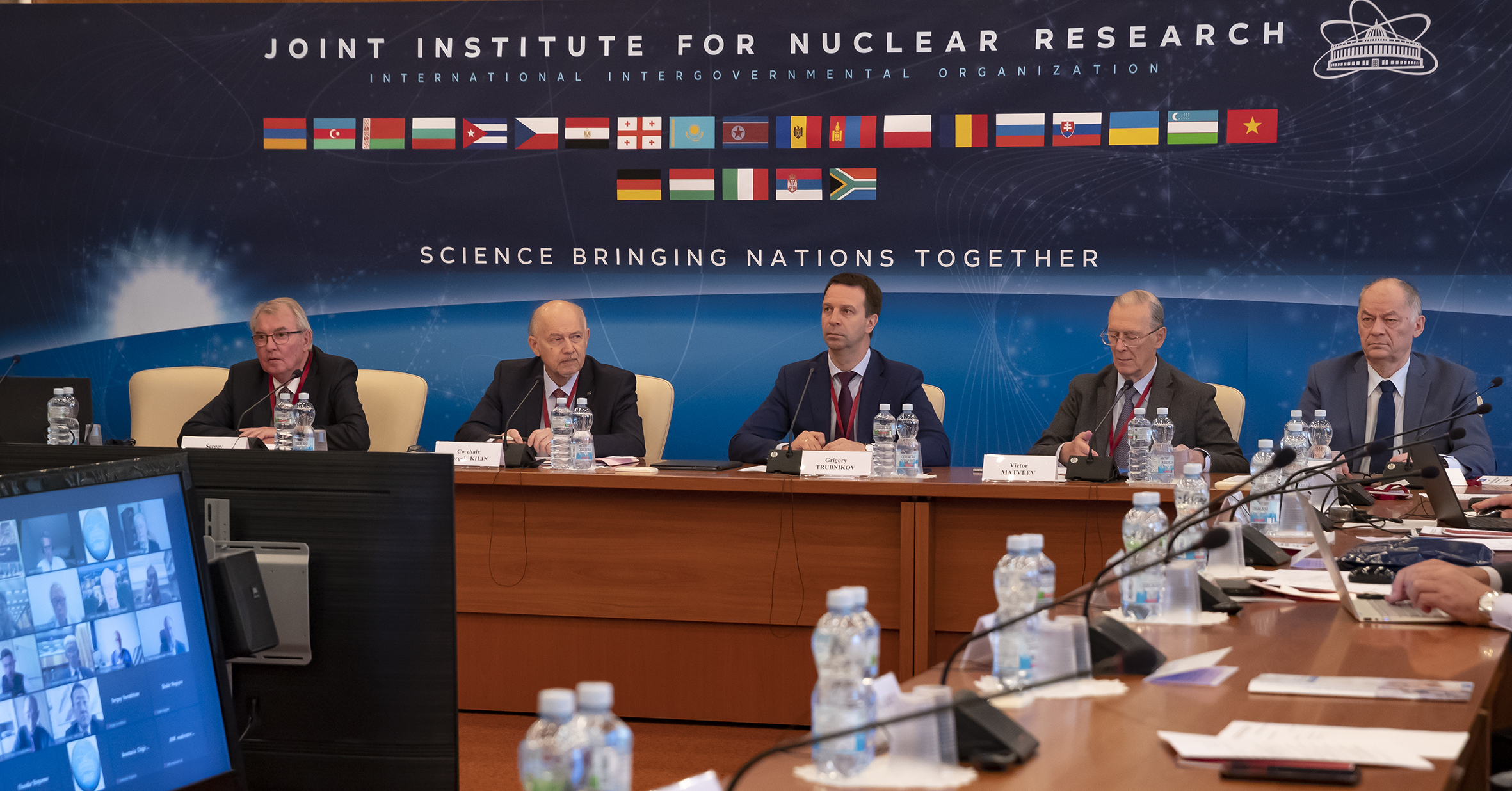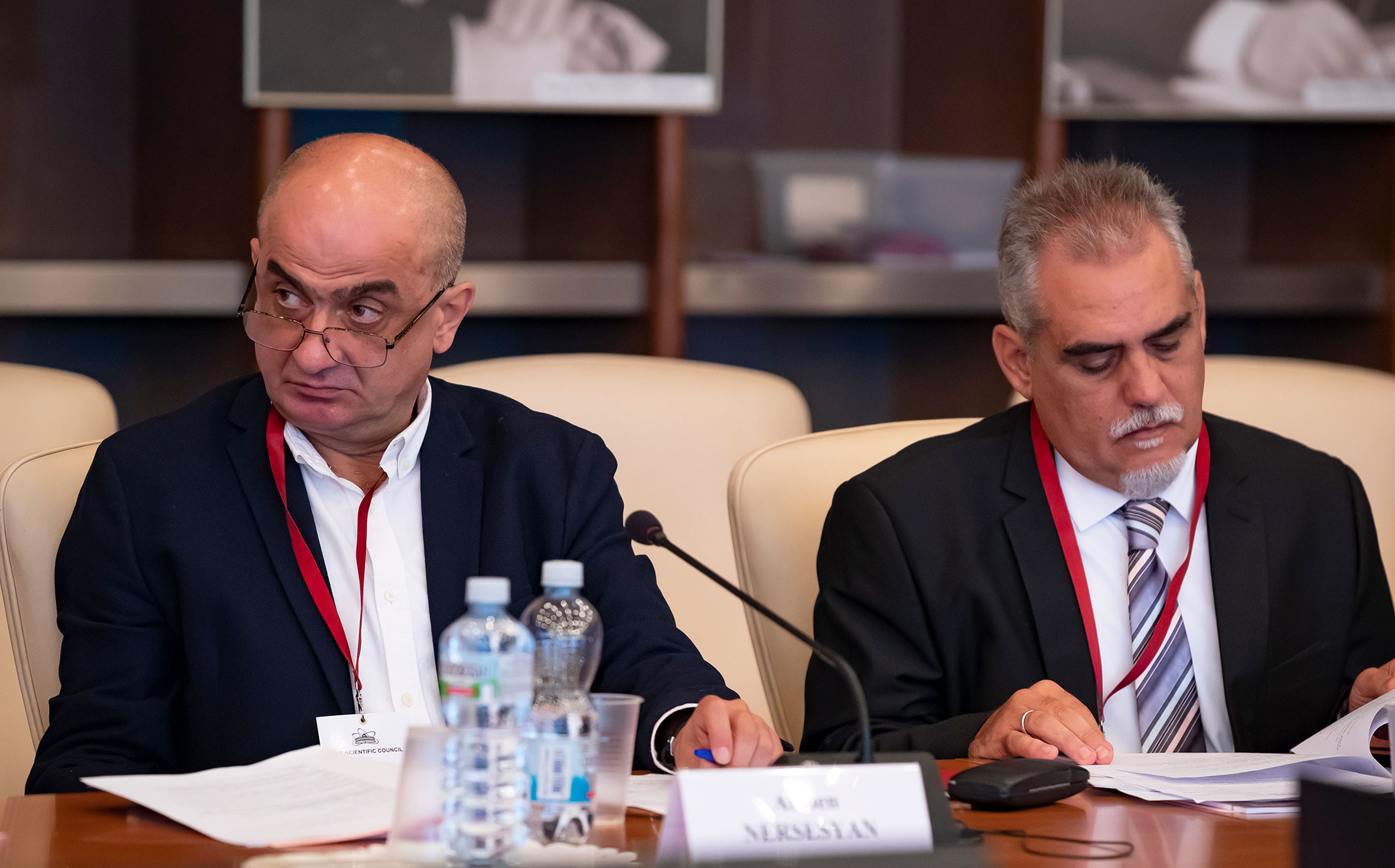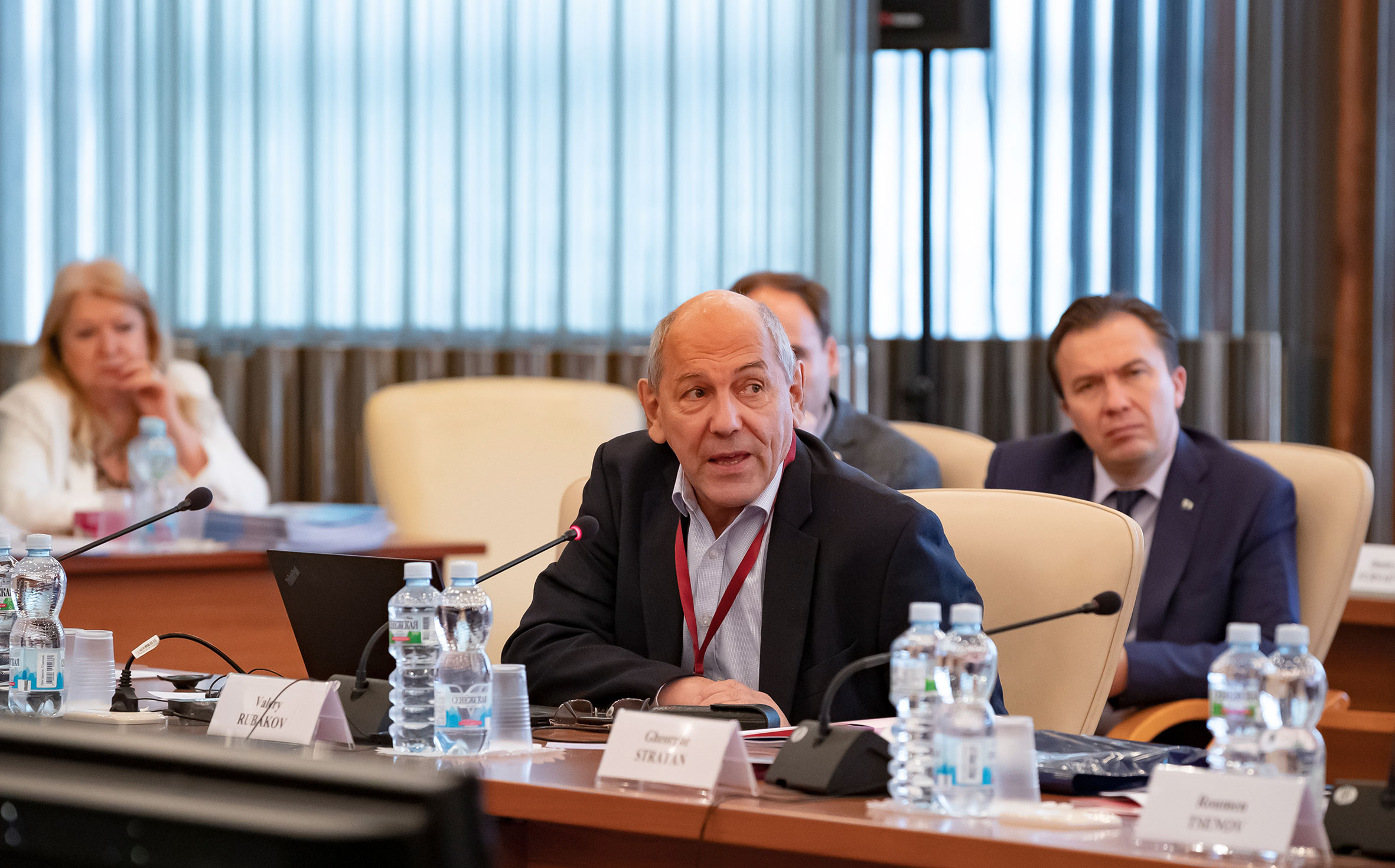Scientific Council: stable work and ambitious long-term scientific development programme at JINR
News, 30 September 2022
On 29 September, the 132nd session of the Scientific Council began in a hybrid format. Participants discussed the scientific results that have been achieved this year at the Institute’s laboratories. The draft of the new Seven-Year Plan for the Development of JINR for 2024 – 2030 was presented for the first time.
The current session included new members of the Scientific Council who were elected at the JINR Committee of Plenipotentiaries session in May: Zhao Hongwei, Deputy Director of the Institute of Modern Physics of Chinese Academy of Sciences, Tran Thi Thanh, President of Vietnam Atomic Energy Institute (VINATOM), Ana Maria Cetto, President of the Mexican Physical Society.
JINR Director Grigory Trubnikov opened the session with a report. Presenting the results of the Institute’s work, Director emphasised the increase in funding for basic facilities, the rise in the number of dissertation defences, and the increase in employee salaries ahead of inflation.
JINR Director focused on a number of striking scientific results obtained at the laboratories of the Institute. From January to April, the third and longest cycle of commissioning work at the NICA Accelerator Complex at VBLHEP JINR was successfully held. The project team achieved simultaneous operation of the three main accelerators at the NICA complex: the Heavy Ion Linear Accelerator (HILAC) and two superconducting cyclic accelerators, the Booster and the Nuclotron. The accelerated beam was extracted to the BM@N facility, where large data statistics were collected in the SRC (Short Range Correlation) physics experiment. So far, all 80 dipole magnets have been installed in the tunnel of the collider. A new commissioning cycle at the complex has recently begun.
The Superheavy Element Factory at FLNR produced a new isotope 280Ds. This is the third isotope discovered at the Factory since its launch at the end of 2020. Experiments on the study of elements 112 and 114 continue. Experiments to study their chemical properties are planned from October to December.
Another expedition to build the Baikal-GVD deep-underwater neutrino telescope was successful. The number of installed clusters has now increased to ten and the telescope has reached an effective volume of 0.5 km3, becoming the largest in the Northern Hemisphere. The JINR neutrino programme also includes the participation of JINR scientists in an experiment at the Kalinin Nuclear Power Plant, where new measurements were carried out in September in a zone even closer to the reactor. JINR specialists are actively involved in the DANSS, JUNO, and Daya Bay experiments.
The modernisation of the IBR-2 Research Reactor at FLNP continues. Work on the new NEPTUNE neutron source project is underway. The Institute conducts a wide range of applied research in the fields of ecology, materials science, archaeology, medicine, and the study of objects of extraterrestrial origin. The development of the Tier-1 computing centre and information technologies at MLIT JINR, in particular, quantum algorithms, was noted. The successful work of the Institute’s staff within the CERN Collaboration continues. An updated Practical Arrangement between JINR and the International Atomic Energy Agency (IAEA) has been recently signed to strengthen the organizations’ existing cooperation.
“These are the results for only eight months of this year. We do not stop the scientific activity even for a single moment and, moreover, the Institute is becoming more and more strong, active, and energetic,” JINR Director Grigory Trubnikov highlighted.
The draft of the new Seven-Year Plan for the Development of JINR for 2024-2030 was then presented to the JINR Scientific Council.
Drafting of the project was preceded by a serious analysis of global scientific trends. The long-term development strategies of organizations such as NuPECC, CERN, and the OECD were taken into account. JINR major scientific infrastructure projects harmoniously complement the global landscape of the megascience class infrastructure. Grigory Trubnikov emphasised that the main principle of the new document was to maintain the uniqueness of the Institute, to be the leader on the world scientific stage in a whole range of fields, where the Institute would be the most competent and competitive organization. In its current phase, the Institute shows stable work, grows scientific potential and performance both in particle physics, nuclear and condensed matter physics, and the life sciences. JINR activities, according to the new Plan, will not only ensure that basic research is carried out, but also that a number of sustainable development goals are met.
The key chapters of the new Plan focus on the development of JINR large-scale scientific infrastructure with its flagship facilities and research projects. The experts had paid particular attention to the priority of projects preparing the document. In the new seven-year period, JINR will continue to work on expanding international cooperation and involving new countries in the JINR orbit. Another important element in the development of the Institute will be an emphasis on attracting talented scientists and engineers to JINR, especially young people, which requires a comprehensive approach to improving working and living conditions in Dubna.
The Seven-Year Plan for the Development of JINR for 2024 – 2030 has been developed in accordance with the Long-Term Development Strategy of the Institute up to 2030 and beyond. The document is scheduled to be adopted at the JINR Committee of Plenipotentiaries meeting in November 2023.
The report led to a lively discussion among the participants of the session. International experts noted that the Seven-Year Plan was impressive in its scientific depth, multidisciplinary approach, and dynamic pace, but it also required a hazard evaluation. Responding to questions and comments from members of the Scientific Council, Grigory Trubnikov stressed that work on hazard evaluation and the development of several scenarios for adjusting the Seven-year plan was actively pursued.
An important event since the previous session of the Council was the appointment of a new Plenipotentiary Representative of the Republic of Vietnam to JINR. Vice-President of the Vietnam Academy of Science and Technology Tran Thuan Anh, who arrived in Dubna as a member of a large delegation to get acquainted with the scientific infrastructure of JINR on the sidelines of the Scientific Council, became a new Plenipotentiary Representative. A delegation led by H.E. Dang Minh Khoi, Ambassador Plenipotentiary and Extraordinary Ambassador of Vietnam to the Russian Federation, and H.E. Chau Van Minh, President of VAST, were also welcomed on the first day of the session.
On the first day of the SC, the election of Director of the Laboratory of Theoretical Physics JINR was held, with RAS Corresponding Member Dmitry Kazakov being re-elected.
On the second day, participants heard a scientific report by Victor Ryabov on the research programme at the MPD facility of the NICA Collider. The members of the Scientific Council reviewed and approved the updated compositions of the JINR Programme Advisory Committees on particle physics, nuclear physics, and condensed matter physics. The Scientific Council approved the decision of the jury to award the Dzhelepov Prize. The laureate was Pavel Apel, Director of the Centre of Applied Physics at the Laboratory of Nuclear Reactions JINR, for his contribution to JINR development of the production of track membranes. The session also saw awarding of diplomas to winners of JINR prizes for the best scientific, scientific-methodological, and scientific-technical applied papers.
The next 133rd session of the JINR Scientific Council is scheduled for 16 – 17 February 2023.

